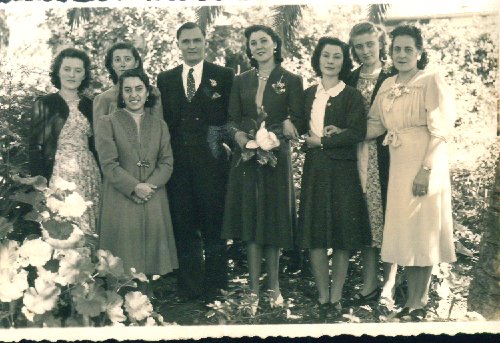Jan Osycka
“My name is Jorge Osyčka and I am from northern Argentina. My grandfather Jan — or Juan, as he his known locally — Osyčka came from Moravia but life brought him all the way to Argentina. He was there when the Czechoslovak agricultural colony was established. I’d like to tell you his story now.
Grandfather was born in 1891 in Velké Bílovice, Moravia, as the second youngest of eight. The second son of the family died as a child, the other two perished in war. Jan, along with three of his sisters, first immigrated to Chicago, then, on their uncle Petr Šašvata’s advice, left for Argentina in 1915. They settled in a village called Sáenz Pena in the province of Chaco.
Life in Sáenz Pena wasn’t easy. The village itself was ruled by military authorities and surrounded by uncultivated wilderness where the natives lived. Its only inhabitants were a few farming families.
Life in Sáenz Pena wasn’t easy. The village itself was ruled by military authorities and surrounded by uncultivated wilderness where the natives lived. Its only inhabitants were a few farming families. In 1918 the local government gave my grandfather a few hundred hectares of land on the Galpón pampas, but they were difficult to farm, at least at first. Living here was also hard. Public facilities, schools, stores were all far away, farmers had only themselves and their friends to rely on.

Thanks to their collective effort the settlement began to prosper. Some of the newcomers had experience growing cotton and they managed to get machines to cultivate and process it. The news of the colony’s success had reached other fellow countrymen and the Czechoslovak community soon grew into a considerable size.
By this time grandfather Jan was already a respected resident. He provided his new neighbours with advice as well as material help. He offered them a large part of his lands, which he couldn’t farm on his own in its entirety, he lent them his tools and some remember him even paying off their loans.
Because Argentinian schools were far away, Jan Osyčka first established a classroom in his own home and then bought two hectares of land in the town, where Czechoslovaks built a school and a community building, which still serves the residents today. He also founded a library and donated over a hundred of his books he brought with him from his homeland.
Homeland he never forgot about and never gave up on. During the Second World War he financially supported the Czechoslovak Red Cross, Czechoslovak resistance in Argentina as well as the government in exile, based in London.
Because Argentinian schools were far away, Jan Osyčka first established a classroom in his own home and then bought two hectares of land in the town, where Czechoslovaks built a school and a community building, which still serves the residents today.
In 1916 Jan Osyčka founded a local branch of the Czech National Union which later became the Czechoslovak National Union. Grandfather was the president for seventeen years. The association, now called Unión Checoslovaca – Československé sjednocení, is still running today.
When Jan Osyčka passed away unexpectedly, after the Second World War, the whole town gathered to say their farewells on his last journey. And the name Osyčka lives on in Chaco to this day. In 2007 we opened a small museum in the community building, which documents the origins of the local Czechoslovak colony, and named it after my grandfather. Without him there, life in Chaco in the last century would have been much more difficult.



